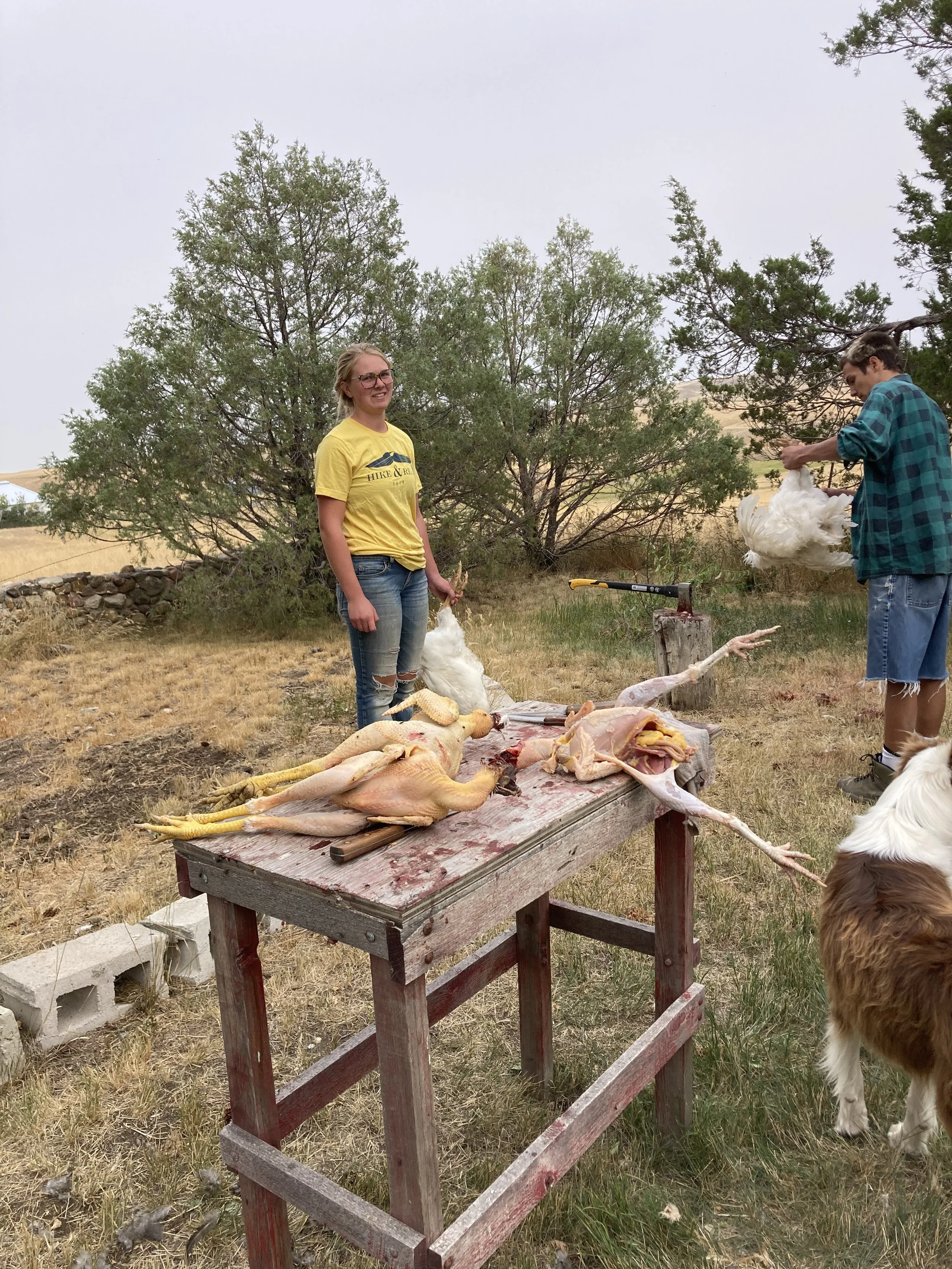Feeding Teenagers
I don’t know a lot about teenage boys, but I know food is important to them.
So when my 15-year-old nephews from Portland came to visit the ranch, I knew they came to the right place to see where their food originates. After all, everything I do revolves around feeding people.
First, we loaded a trailer with small square bales. The hay will feed the sheep during lambing season next May. Those lambs will be in a freezer by next March. My take-home thought from loading hay: the boys are a lot stronger than they were three years ago. Back then, they had to roll the bales to the trailer.
The creek that flows where my cows are grazing called to us in the 90-degree baking sun. We couldn’t resist. We loaded inner tubes, dropped off our shoes at my east fence line and parked the pickup on the west end. Four hours of cool water later, we hiked back to the pickup.
The boys helped at the farmers market where they saw the final results of food-producing efforts by so many people – honey, vegetables, flowers, fruit -- and meat, of course.
The pinnacle of their food-related education arrived when it was time to butcher chickens. I have laying hens, but last spring I partnered with a friend to raise fryers. Sunday was the day that partnership ended.
We picked up the chickens from my friend’s coop and caged them in the back of my pickup that has a topper.
Then we set up a pot of hot water in my yard. Each of the boys took a turn climbing inside the pickup to grab a chicken by the legs. The ensuing squawking and flapping created enough chaos to startle the curious cats.
The dogs thought the beheaded chickens were fascinating, but the boys gathered the heads before the dogs ate what they shouldn’t.
We scalded each chicken and plucked the feathers, noting the craw and which chickens were better foragers than the others.
The boys learned the origin of pecking order when we caught a chicken that had been pecked almost to death. The coop had been too small so the chickens played their version of Hunger Games.
Biology was the next lesson. As they gutted the carcass, they found the gizzard, liver, lungs and how all of them stayed in place. Pictures in books can’t convey all that fingers can touch.
Finally, we stuffed the last rinsed chicken into a freezer bag.
We ate beef brisket for supper.
The boys are old enough to take driver’s education, but learning the rules of the road is different from learning the skills of driving. Fortunately, my ranch has only a few gates and one bridge that require precise steering. Staying on the two-track dirt roads through the pastures is preferable, but optional.
Birds need to eat, too, and the best way to learn to drive is put in miles so we loaded the .22 and searched the pastures for gophers. Both boys are surprisingly good shots.
I knew the boys needed to taste their hard work so I baked chicken for supper that night. No one was impressed. The rest of the chickens will be soup.
We didn’t have time for all of the jobs I wanted to accomplish. For some reason, I thought we would add tin to the roof on an old house. I don’t know what I was thinking. We barely had time to go swimming and shoot gophers, much less nail tin on a roof.
Maybe we can finish that job when they come back next summer.
Maybe by then, I’ll know how to cook the food I raise.
But don’t bet on either one.
